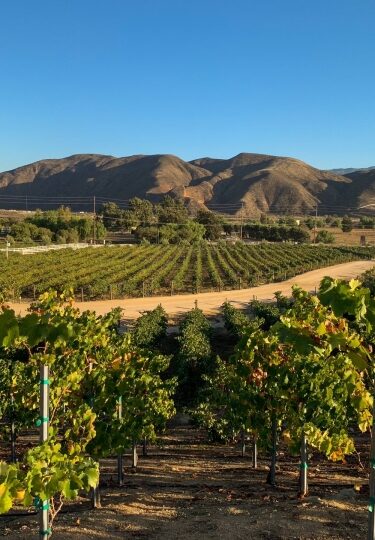When you imagine a sun-kissed West Coast vacation, first come the images of gleaming waves crumbling onto golden sand, and second the fruit-filled vineyards of California’s wine regions. A glass of robust, smoky Zinfandel – the state’s heritage variety – has become nearly as signature a product as a glass of Champagne.
While wine has been produced in the Golden State since the 18th century, it wasn’t until 1976 and the ‘Judgment of Paris’ that Californian wines truly arrived on the global stage. This blind tasting event was a David and Goliath-style showdown of the wine world – California versus France. The Europeans were overwhelmingly the favorites.
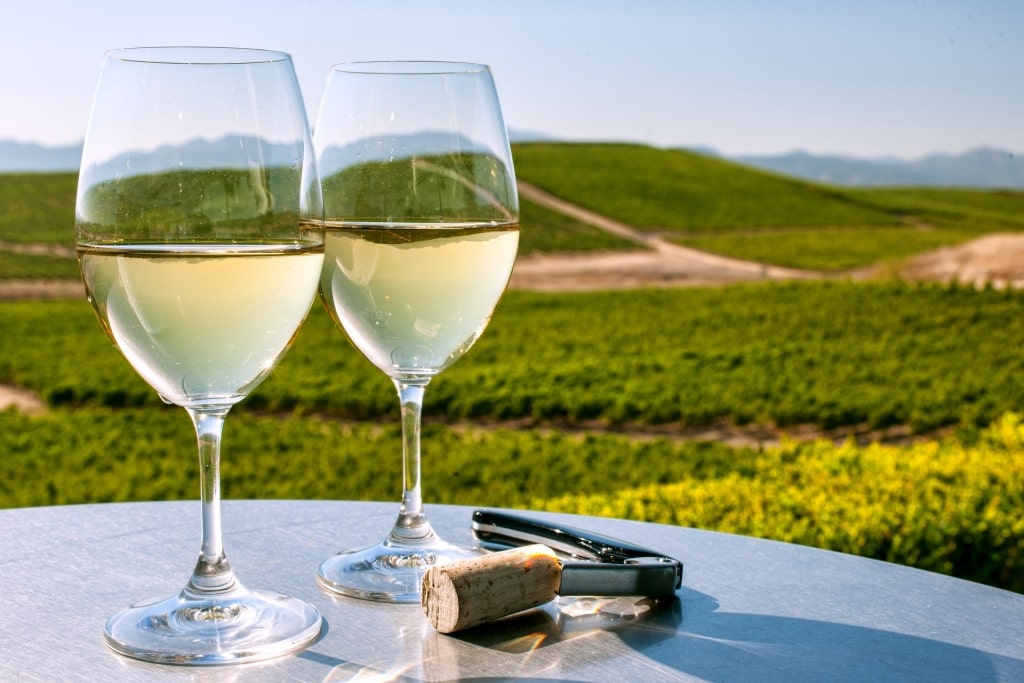
Californian Chardonnay
However the undeniable quality of a Californian Chardonnay from Chateau Montelena and a Cabernet Sauvignon from Stags Leap – both Napa Valley labels – paved the way for the greatest upset in wine history.
The winning bottles are now stored in the Smithsonian Museum, but don’t fret: California has plenty more. If taken alone from the rest of the USA, the state is the world’s fourth-largest producer of wine in the world (after Italy, Spain, and France). Its abundance of sunshine and minimal risk of frost ensure an extensive fruiting season.
You’ll find an abundant variety of grapes grown from its arid south to misty north. However, coastal American Viticultural Areas (prime grape-growing land parcels) in particular have ideal conditions for the growth of straw-yellow Chardonnay and ruby Pinot Noir. You’ll find flights waiting for you in the expansive tasting rooms of historic family-owned estates or on the barrel tables of fledgling operations working out of converted barns.
Here’s a north-to-south guide to the best California wine regions and what else to see and do between tastings.
Napa County
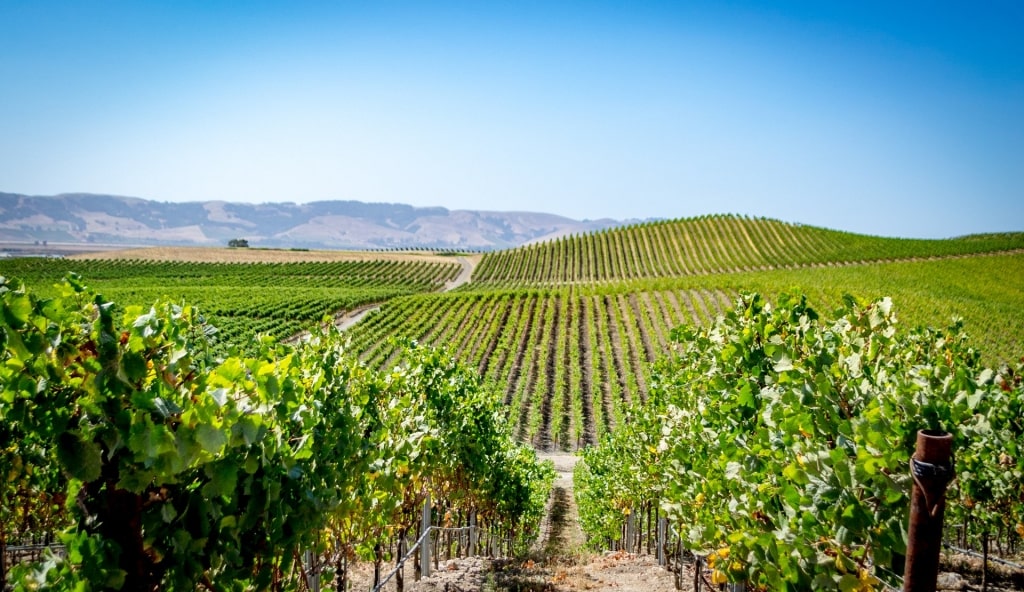
Napa Valley, California
Napa Valley is the superstar of the California wine world, making it one of the top destinations for a California honeymoon. In this four-mile wide, thirty-mile long valley, you’ll find replica Tuscan castles, Michelin-starred chefs like Thomas Keller, and 240 wineries serving some of the world’s most sought after vintages.
About an hour’s car journey north of San Francisco, driving Highway 29 into Napa can feel like you’ve taken a detour via Tuscany. A verdant landscape of gentle hills braided with vines, Napa’s sought-after soil brings forth award-winning wines. It is especially well known for its rich, fruit-forward Cabernet Sauvignon.
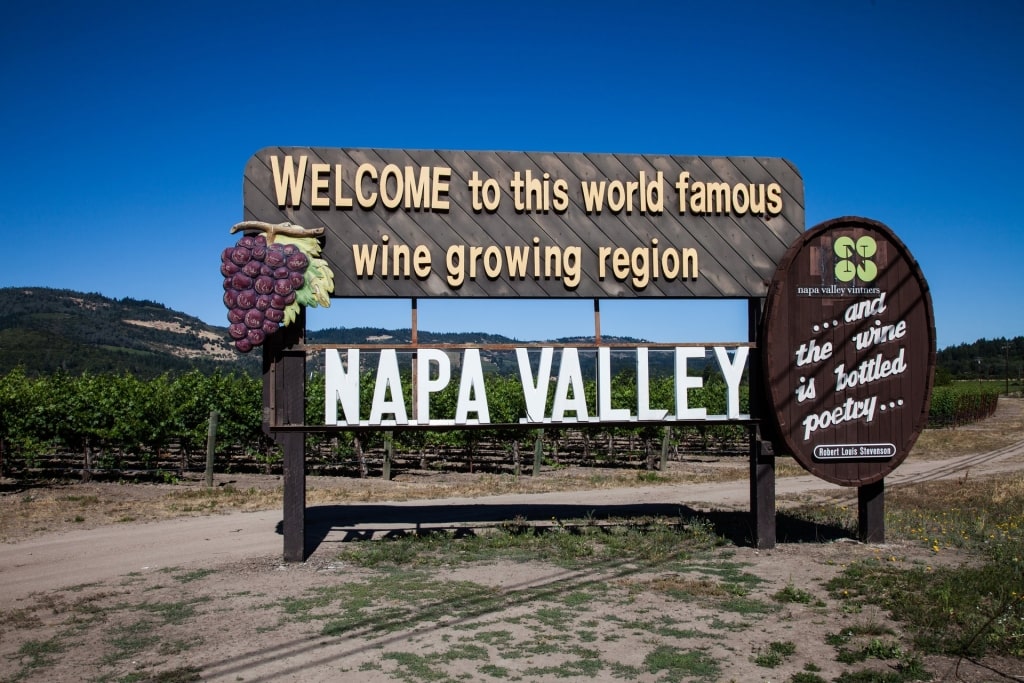
Napa Valley, California
Beneath cobalt blue skies and amid the area’s charming small towns, you’ll find the tasting rooms of big names like Mondavi, Diamond Creek, Opus One, and Joseph Phelps.
Napa Valley American Viticultural Area (AVA) is divided into smaller AVAs. Fans of Cabernet Sauvignon should have an eye out for Oakville, Rutherford, St. Helena, and Stags Leap on labels for an assurance of something special. The Chiles Valley is the AVA for Zinfandel lovers, while fans of white will find the valley flooded with magnificent Chardonnays, Sauvignon Blancs, and Semillons.
You’ll find most of Napa’s tasting rooms on Highway 29. The parallel-running Silverado Trail offers a quieter, more rustic vibe as you drive or pedal beneath the branching oaks. Stop for a sparkling wine break on the patio of Mumm Napa Winery.
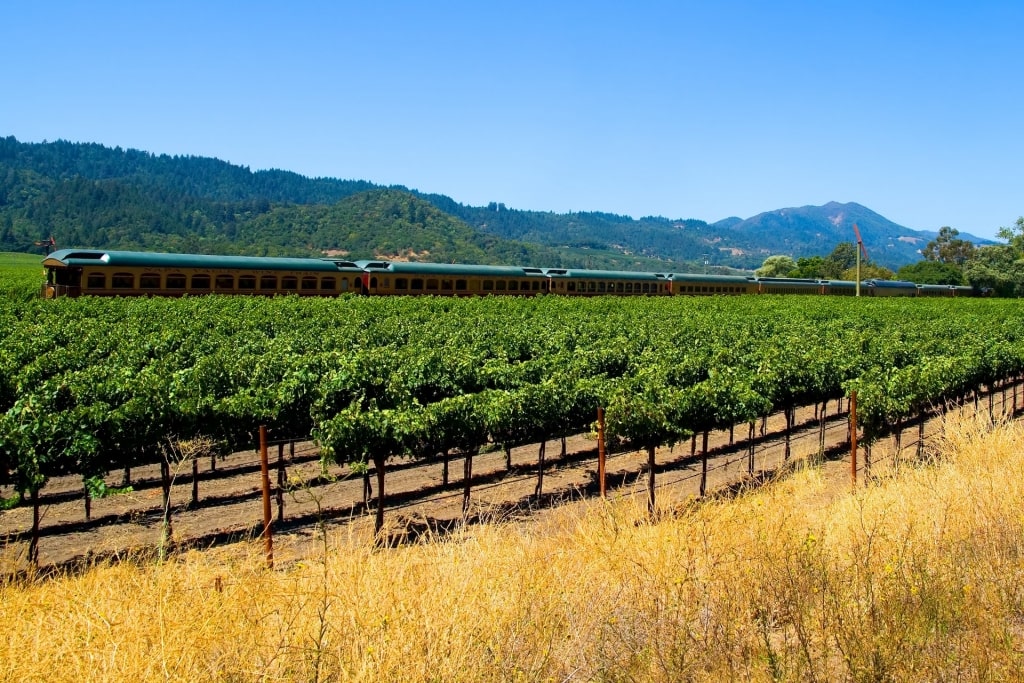
Napa Valley Wine Train, California
If you’d rather leave the sat nav behind, book a seat on the Napa Valley Wine Train. Sink into one of its armchairs as the restored antique Pullman rail car whisks you through the valley. Enjoy the classic comfort of one of the country’s last historical passenger railroads as you sip a Napa Cabernet and enjoy a superlative fine dining experience.
Sonoma County
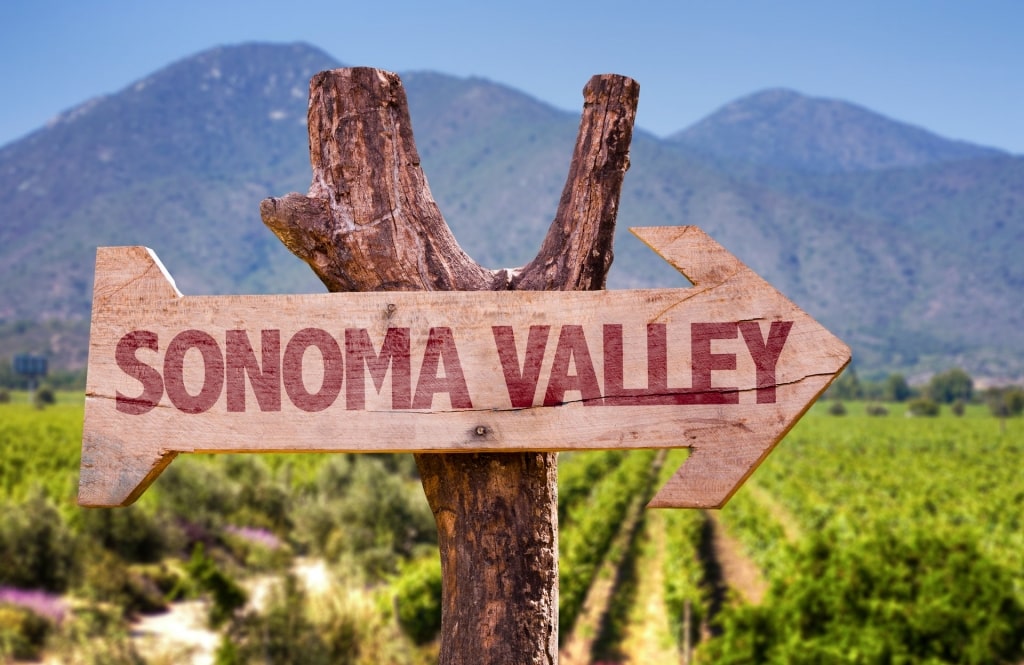
Sonoma Valley, California
For the Pinot Noir fan, Sonoma County is your nirvana. Recognized as another of the best wine regions in California, Sonoma’s 400-plus wineries bottle more of this elegant red than any other county in the state.
But world-beating Pinot isn’t all that Sonoma is about. Sitting to the west of Napa, between the Pacific and the Mayacamas Mountains, Sonoma’s unspoiled coastline and leafy hinterland offer winemakers numerous microclimates in which to grow over 50 grape varieties at often optimum conditions.
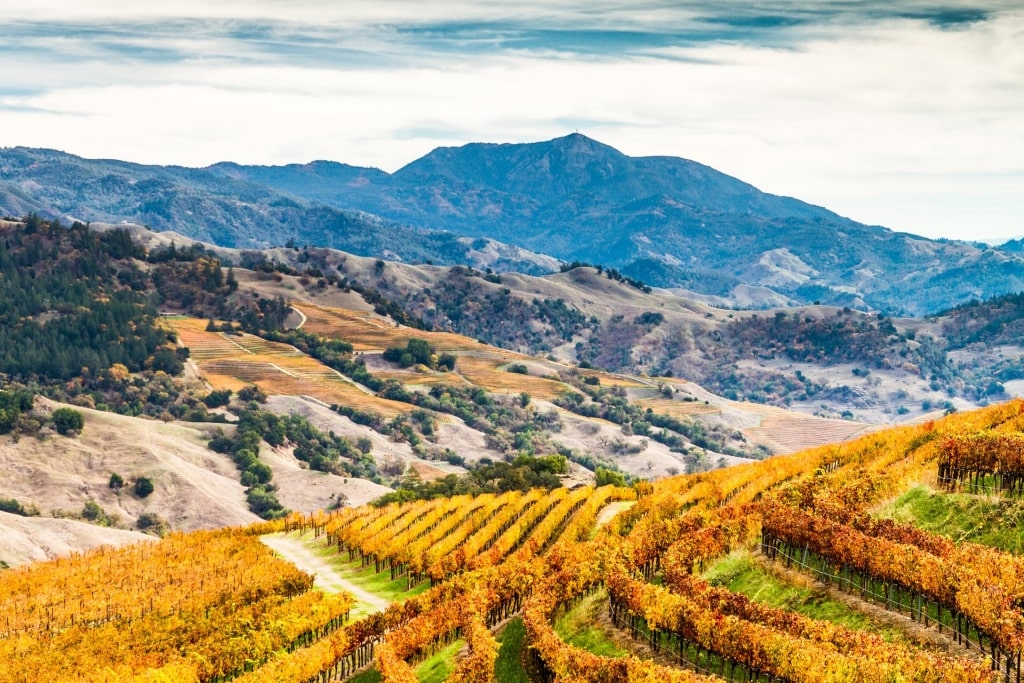
Alexander Valley in Sonoma, California
As a wine region, it predates Napa. In 1857, Buena Vista Winery became the state’s first premium winery. A visit to this origin point will reward you with a real grounding in West Coast wine history (as well as some tastings to savor). Famous AVA’s to visit here include the northerly Alexander Valley – known for its Cabernet – while its neighbor, Dry Creek Valley, is Zinfandel country. Here, you’ll find some of the state’s oldest vines twisting up from hills redolent of Northern Italy’s Langhe region.
The verdant Russian River Valley is perhaps the jewel of the county, if not of all the California wine regions. Its orientation to the Pacific ensures ideal conditions for fine and intense Chardonnay as well as that magnificent Pinot Noir – look out for Davis Bynum if you want a true expression of this AVA.
Read: Best Small Towns in California
Los Carneros
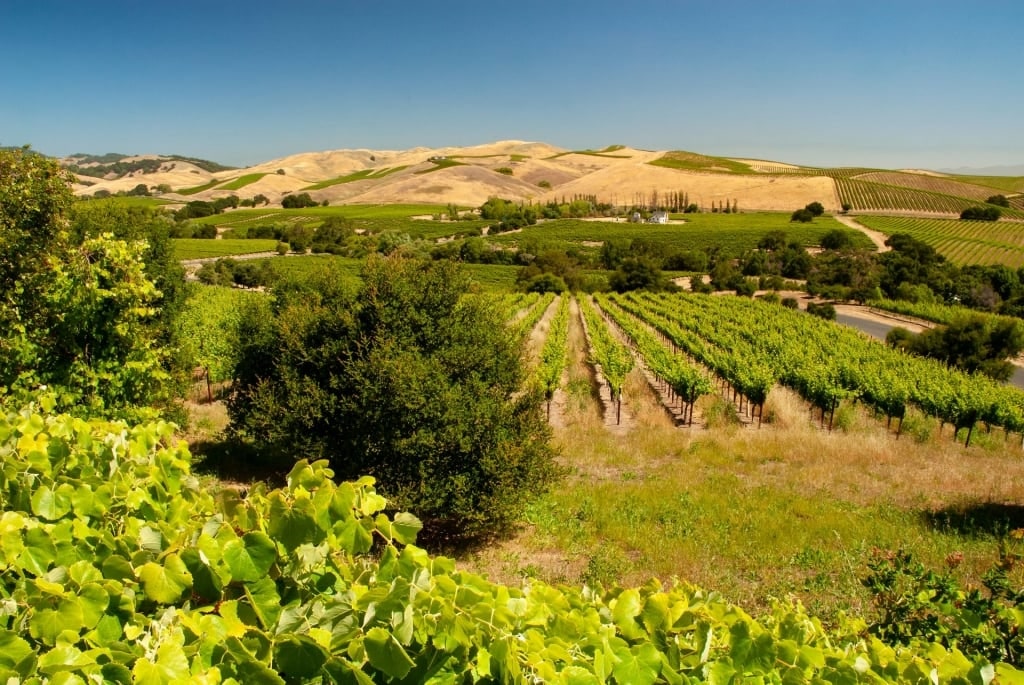
Los Carneros, California
If you can’t decide whether to visit Napa or Sonoma, go to Los Carneros. This AVA straddles the southern ends of both Sonoma and Napa valleys, offering the indecisive oenophile the most enticing two-for-one of all of California’s wine regions.
Known for its superb, crisp Chardonnay (try Schug as a classic example), Los Carneros also specializes in Pinot Noir, Merlot, and Syrah. Sparkling wine fans will also find much to revel in here – settle into a seat on Gloria Ferrer’s panoramic terrace for top quality bubbles.
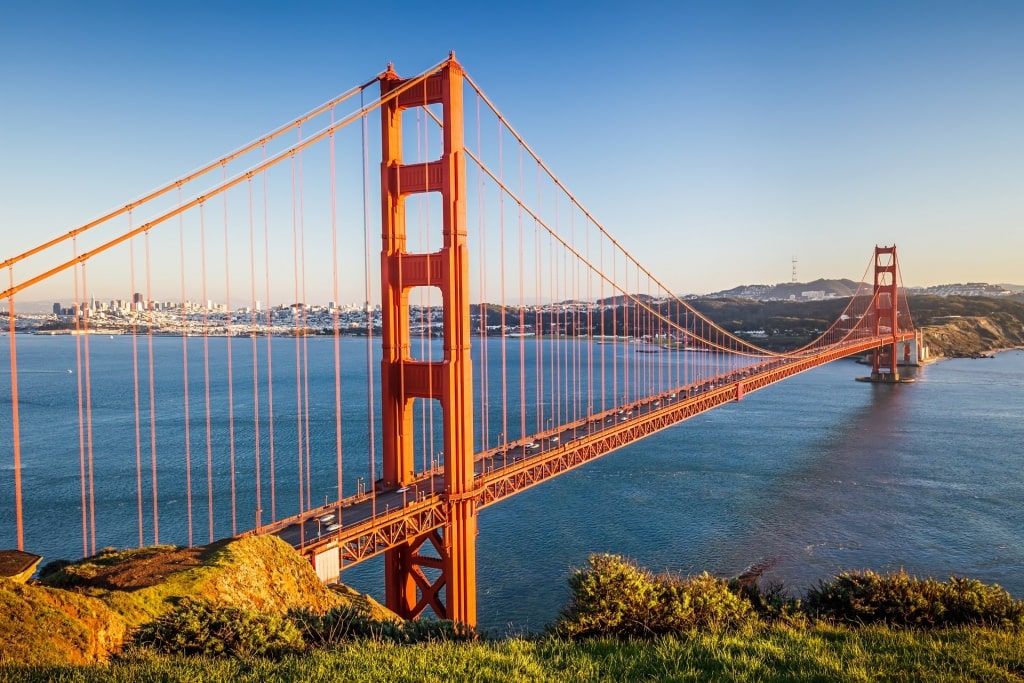
Golden Gate Bridge in San Francisco, California
Los Carneros is an easy day trip from San Francisco. Take a scenic tour encompassing the Golden Gate Bridge, Golden Gate Park, Twin Peaks, and Land’s End near Cliff House – part of the Sutro Historic Landscape District. Looking north, you should be able to spot Carneros AVA’s rolling hills.
Santa Cruz Mountains
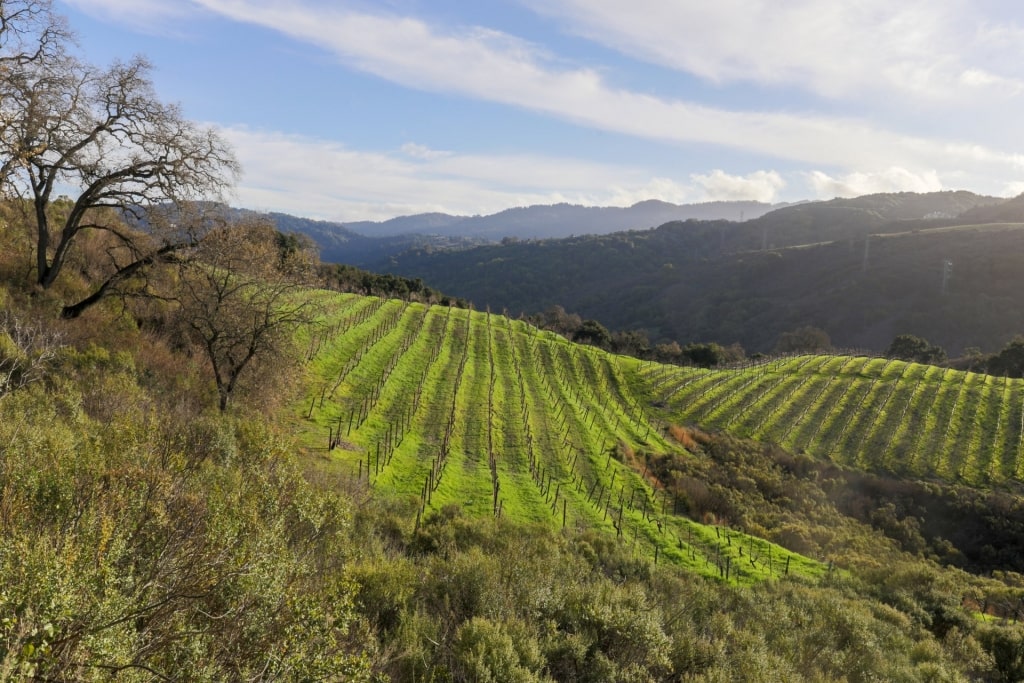
Santa Cruz Mountains, California
At high elevation, planted among soaring redwoods and wiggling mountain roads, the Santa Cruz Mountains AVA is the most dramatic of California’s wine regions. Beginning about half an hour’s drive south of San Francisco, this AVA has smaller-sized vineyards planted from Half Moon Bay until as far south as Mount Madonna and the friendly city of Santa Cruz. Expect stunning coastal views.
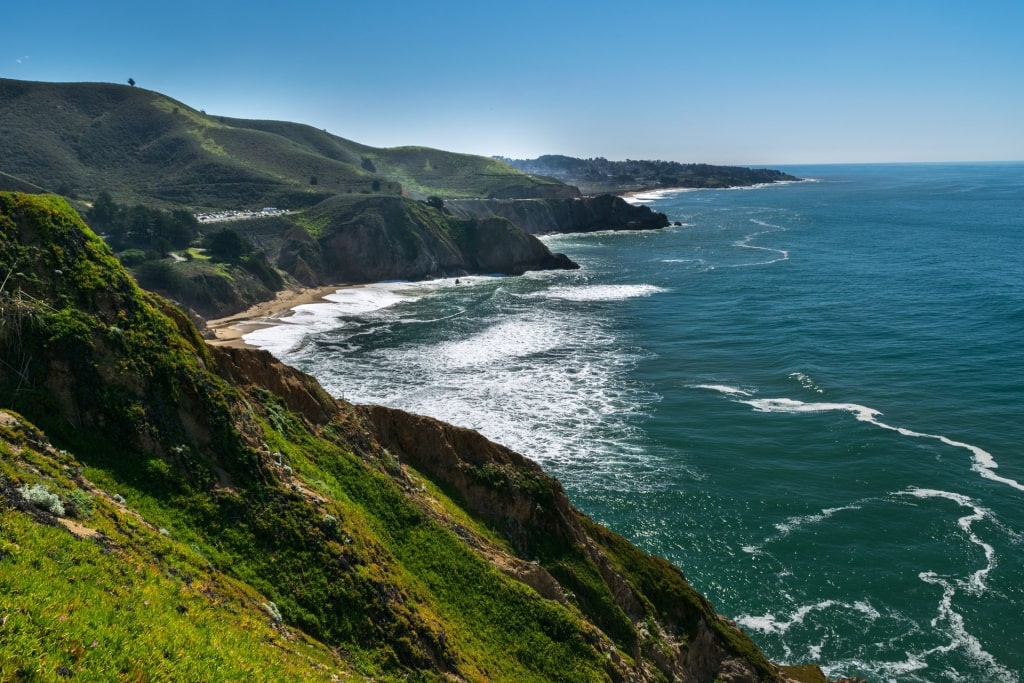
Half Moon Bay, California
You’ll find Pinot Noir and Chardonnay planted on the seaward side of the mountains to take advantage of the ocean’s cooling influence, with warmer climate grapes such as Cabernet Sauvignon, Zinfandel, and Merlot planted inland. There’s a focus on Old World wine techniques among many of these smaller, more isolated vineyards, leading to lower alcohol wines with distinct tannins and minerality when young – in other words: good for cellaring.
With such rugged topography, expect each vineyard to be producing something distinctive. Make time for Bonny Doon (founded by pioneering winemaker, Randall Grahm), Rhys, or Monte Bello-based Ridge, the latter considered one of the best wine producers in the world. For a pre-made itinerary, tap into the Santa Cruz Mountain Wine Trail – Highway 35 to Bear Creek Road – to take in a collection of superb wineries including one set in a 19th-century schoolhouse.
Monterey
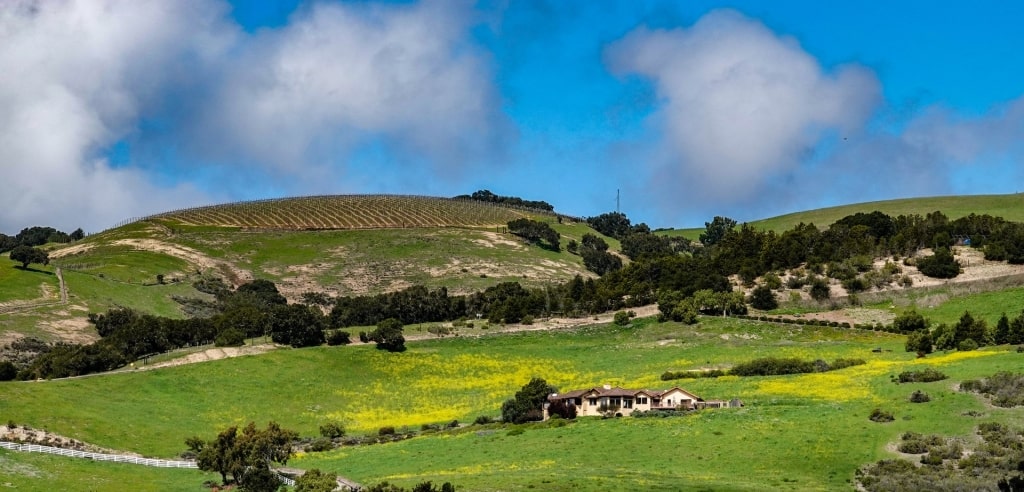
Carmel Valley in Monterey, California
Where the Santa Cruz Mountains ebb southwards, you’ll hit the lush corridor of the Monterey AVA cutting a fertile stripe through the rugged chaparral. Previously known for its affordable wine production in the Salinas Valley, oversubscription of top terroir north of San Francisco has seen quality winemakers relocate to Monterey and help release the true potential of one of California’s most underrated wine regions.
Which isn’t to say quality is hard to find. Producers such as Chalone, Lockwood, and Morgan have created prized expressions of this region: multi-layered Pinots and unconventional Chardonnays that reflect the terrain’s complex geology. You’ll also uncover a spirit of innovation here such as the development of unusual grapes like Albariño, a citric dry white variety from the Iberian peninsula.
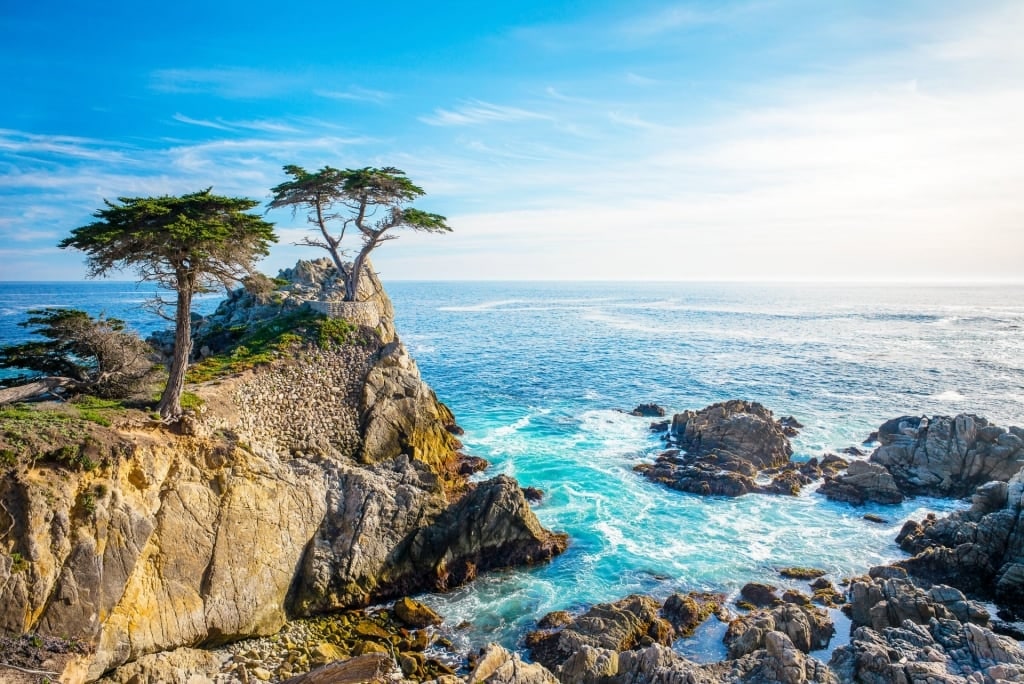
17 Mile Drive in Monterey, California
If you travel into the renowned Cabernet Sauvignon region of historic Carmel Valley AVA, it’d be worth your time to continue following the valley west to the small town of Carmel-By-The-Sea. Discover its charms by booking a tour of the town and its exclusive, eye-popping 17-Mile Drive residential road, or dive into the culture of the area with a tour of the serenely beautiful 18th-century Carmel Mission. After learning about these religious – and wine-producing – pioneers, round off the day with a tasting on the panoramic terrace of Chateau Julien Wine Estate.
Read: Things to Do in Monterey
Paso Robles
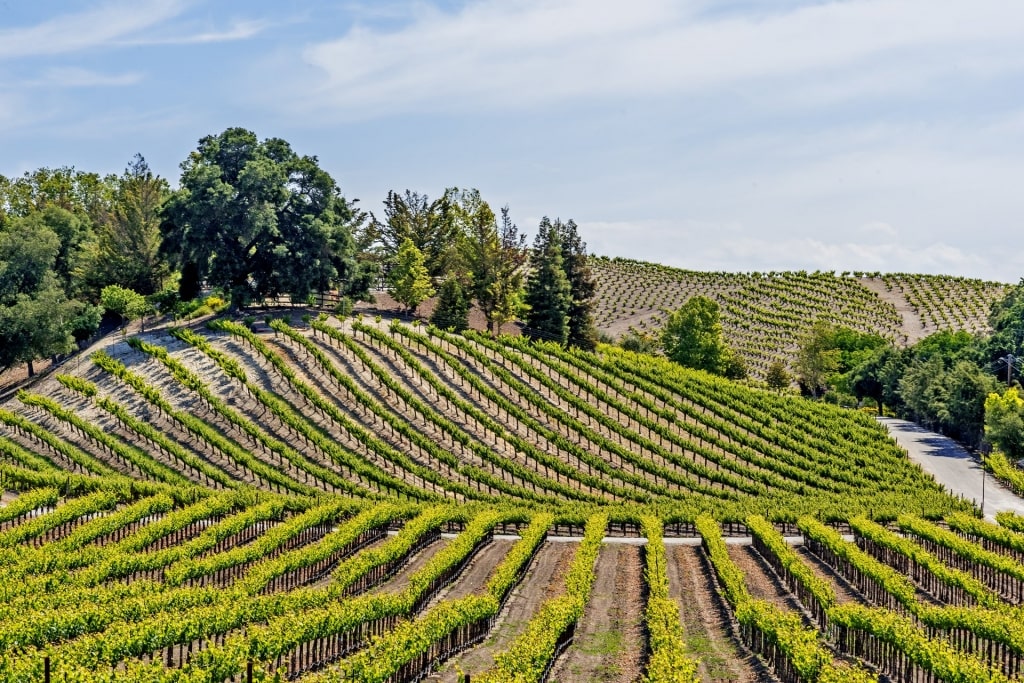
Paso Robles, California
As a longstanding destination for quality Zinfandel, Paso Robles – south of Monterey and about an hour from popular Hearst Castle – has also managed to develop a reputation for excellent Rhône-style wines. This breadth of quality, as well as the town’s charming historic area, has made Paso Robles (or “Paso” to its locals) one of the best wine regions in California to explore.
Located in easygoing San Luis Obispo County, vine cultivation here dates back to the Spanish missionaries. Paso Robles enjoys cooler, wetter conditions than many areas in the state, especially in the higher elevation Adelaida District. Add in geology similar to the Rhône Valley in France, and it was only a matter of time before the Rhône Rangers – as the US producer-advocates of these Old World grapes are known – rode into town.
Southern Rhône-style wines tend to be blends of varietals hailing from that region – think Grenache, Syrah or Viognier – and offer spice and intensity in the glass. Tablas Creek is particularly symbolic of the success of this French-American fusion: a trailblazing vineyard partnership between French winemakers the Perrins and the American Hass family.
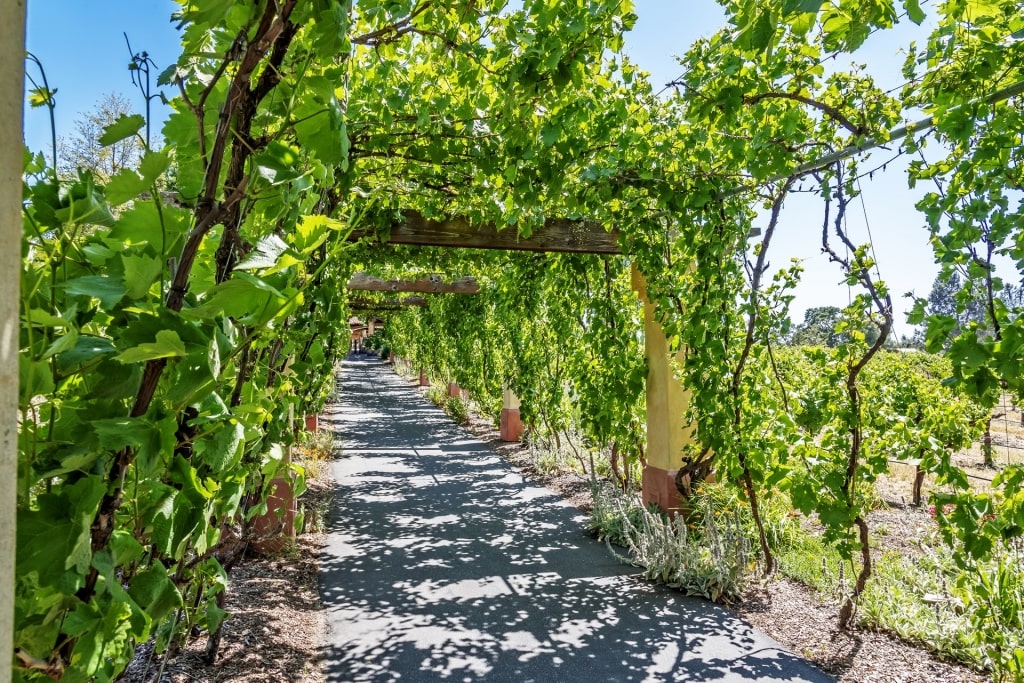
Paso Robles, California
However, it’s not all about the Rhône – you’ll also find smooth, plummy Merlot grown in the warmer spots around Paso. Stop into the Peachy Canyon Winery Tasting Room near Paso Robles for an education in what a Zinfandel wine should really be about.
Santa Barbara County
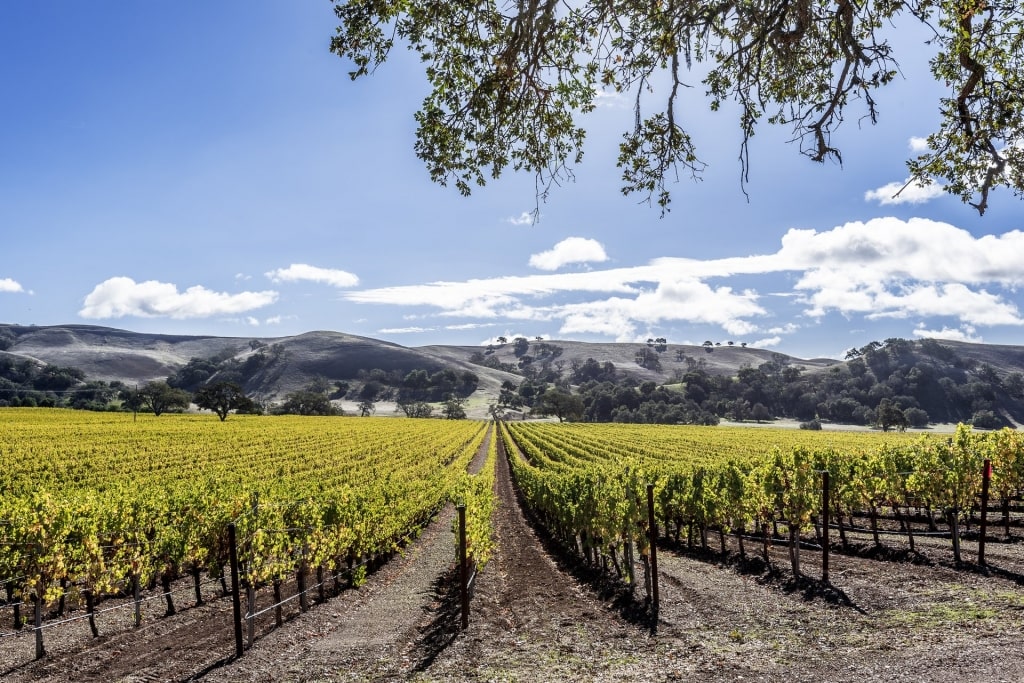
Santa Barbara, California
Santa Barbara County is a landscape of particular Californian pleasantness. Supplying the rolling golden hills that acted as the backdrop for Alexander Payne’s ‘Sideways’, Santa Barbara – also known as “the American Riviera” – has long been a bolthole for Hollywood stars (whether on or off the clock).
A section of the Transverse Ranges – coastal mountains with an atypical east-west orientation – Santa Barbara’s unusual and handsome geography has created one of the best wine regions in California for memorable tasting sojourns.
The wine isn’t just up dusty trails in the hills. Take a guided tour of the city of Santa Barbara’s Spanish colonial past before strolling down towards East Beach for the ‘Funk Zone’. This renovated warehouse is home to tasting cellars, art studios, hip boutiques, and restaurants. It’s also a key part of the city’s Urban Wine Trail.
Read: Best Beaches in Santa Barbara
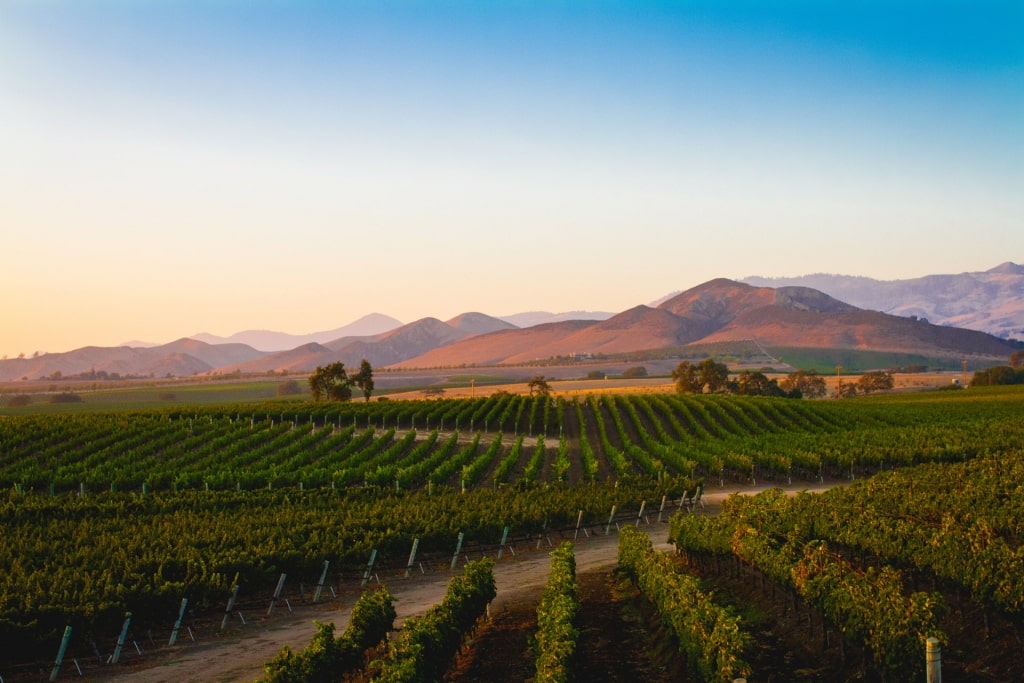
Santa Ynez Valley, California
Beyond the city limits, Santa Barbara’s main wine-growing centers are the Santa Rita and the Santa Ynez Valleys. The hills and oak-fringed grasslands of Santa Ynez in particular offer a medley of micro-climates for winemakers to capitalize on. You’ll find high-quality Syrah in the picturesque hills of this Californian wine region, and fruity Rieslings and Chardonnay closer to the coast.
The eclectic abundance of Santa Ynez can be best approached with a guided tour. Meet winemakers and experts who’ll help you unearth the best vintages to taste while you learn about this tranquil region’s intriguing viticulture and history.
Read: Unique Places to Visit in California
Los Angeles County
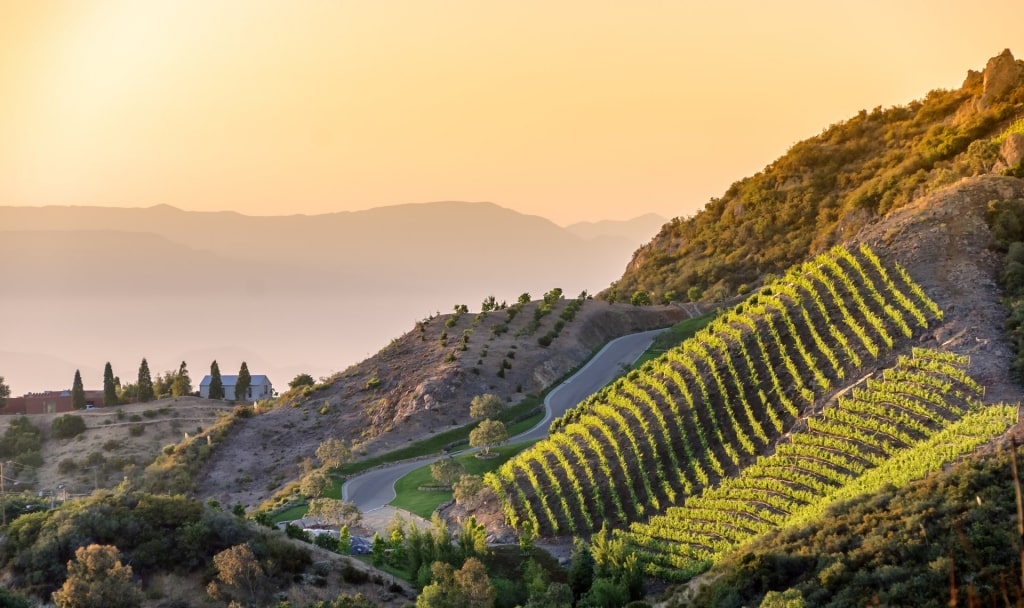
Los Angeles, California
If you can pull yourself away from attractions like Universal Studios or tours of the mansions of the rich and famous, Los Angeles can be the most surprising of California’s wine regions, offering a wealth of good wine to taste at source.
There are over 50 vineyards in the coastal Malibu region, inserted into the elegant undulations of the Santa Monica Mountains. Follow the Malibu Wine Trail to lively tasting terraces with incredible ocean views like that of Rosenthal before descending to cool off in the surf of iconic Malibu Beach.
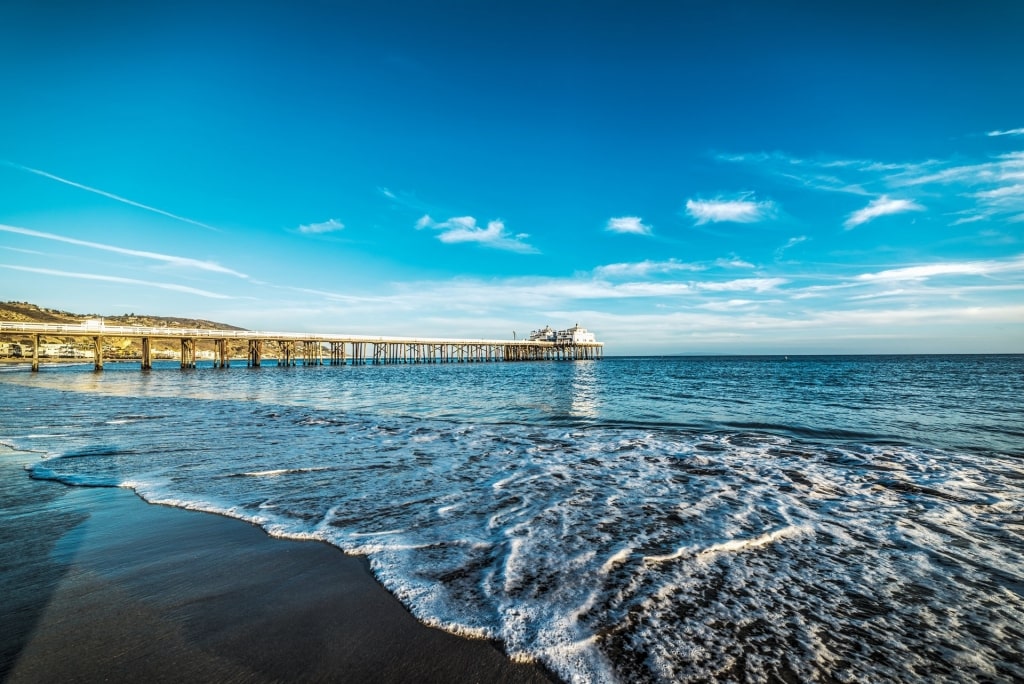
Malibu Pier, California
A guided tour of this storied area is highly recommended, taking in Malibu, Beverly Hills’ boutique heaven of Rodeo Drive, as well as a walk through Santa Monica and onto its famous pier with its charming nostalgic amusements. One of the best family beaches in California, Venice Beach offers a chance to dip a toe into the city’s alternative character, with the serenity of its canals offering an opportunity to quietly reflect on the beach’s engaging eccentricities.
Riverside County
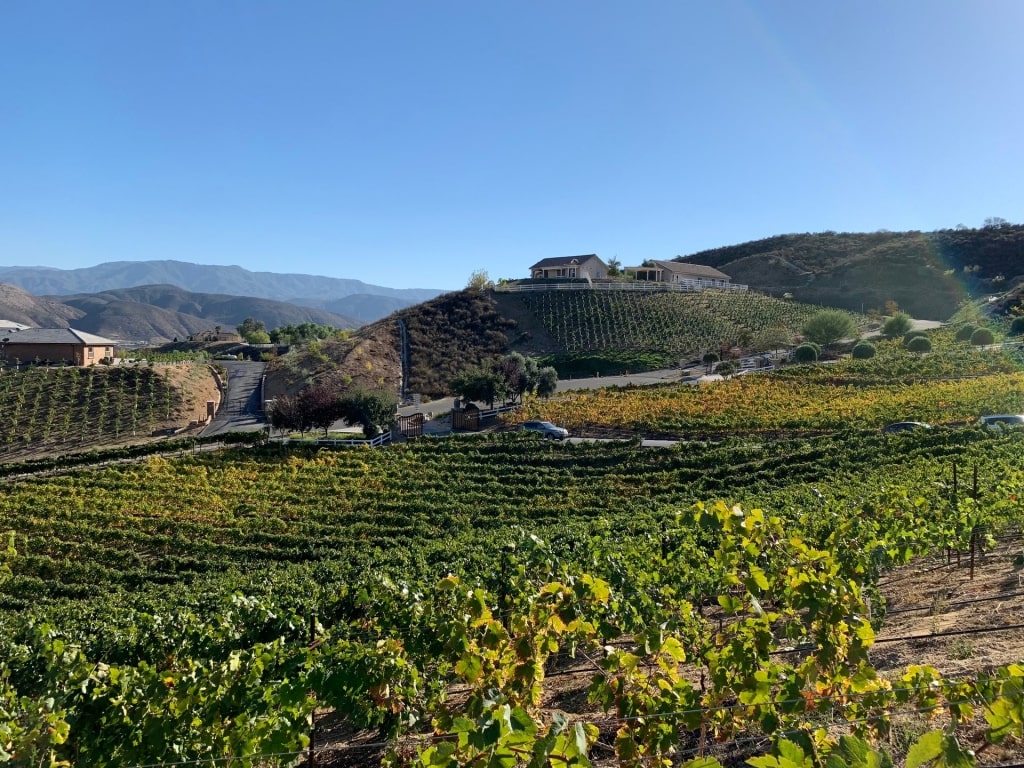
Temecula Valley in Riverside County, California
A couple of hours drive inland, beyond LA county limits, you’ll reach the Temecula Valley. This wine-growing oasis in SoCal’s arid hinterland is a region with ever-developing stature since its founding over half a century ago. As a wine destination, it offers highly drinkable Syrah, Grenache, and Zinfandel (as well as less common wines like refreshing Vermentino and peppery Counoise).
Its hospitality infrastructure for visitors is top-notch, and there’s a sense of collective energy here that’s not always typical of wine regions. Follow De Portola Road for a wine trail with spectacular views of the surrounding mountains, including the convincing Tuscan-style estate of Robert Renzoni. Temecula also throws up fun stops like Churon Winery’s replica French chateau and Briar Rose Winery, the buildings of which are replicas of Snow White’s cottages from Disney’s 1937 film.
San Diego County
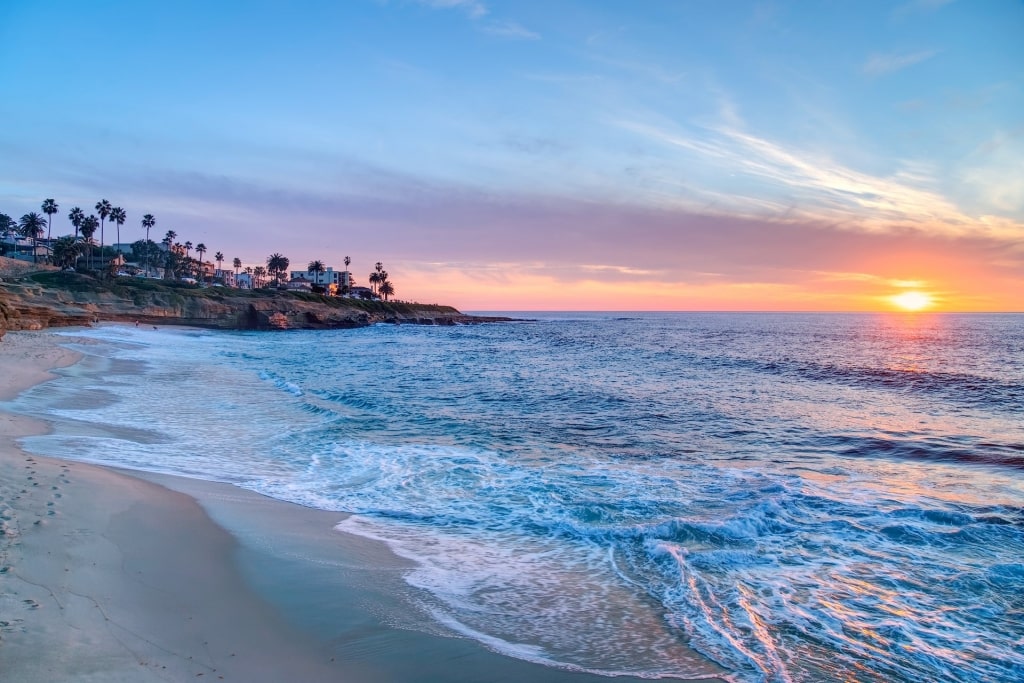
La Jolla in San Diego, California
One of the state’s most historic wine counties, vines were first planted in California in 1769 at Mission San Diego De Alcala, now a part of the city of San Diego. Today, there are two AVA’s entirely within San Diego County – Ramona County and the more established San Pasqual Valley. Grapes, however, are being grown all over this sprawling area, up from glistening sea level into the cool mountains at over 4,000 feet.
For San Diego, it’s been a matter of refocusing attention on the south of the state after the riotous success of the north. With 115 wineries, mostly smaller, family-run affairs dedicated to quality, San Diego’s boutique wine scene is in the midst of doing just that.
Wine varieties here are as eclectic as almost every other AVA along the micro-climate-rich coast. Orfila in the bucolic hills of Escondido is leading the way with superb Pinot, Sangiovese, and Zinfandel, while Hawkwatch in the high altitude Warner Springs is one to watch with its delicious Rhône and Bordeaux styles.
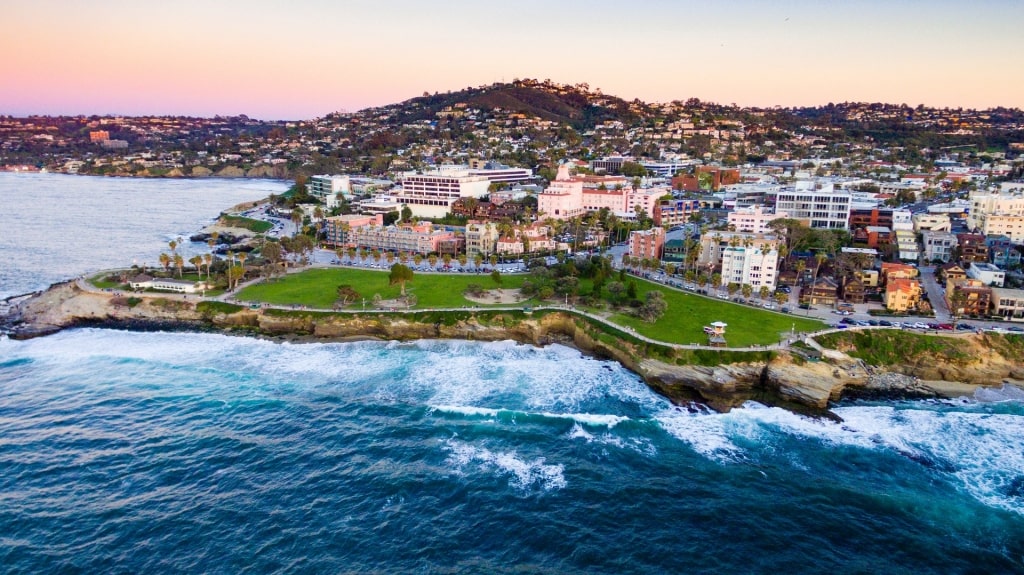
La Jolla in San Diego, California
An excellent bonus that comes with touring San Diego wine country is that you’re near to San Diego. Take a tour of the cultural abundance of Balboa Park, drive north to see the village of La Jolla – as handsome an arrangement of sand, cliff, and sea as you’ll find anywhere in California – before returning south to browse the artisan offerings of historic Old Town.
Balboa Park is also home to the world-famous San Diego Zoo, in which a day easily slips away as you see the 3,000 animals that call this sanctuary home. During this controlled safari, pet gentle goats and hand-feed rainbow lorikeets.
If you’d rather hand-feed yourself, squeeze in a culinary tour of Little Italy. Besides indulging in delectable Italian food, there’s a wine tasting at Vino Carta – the perfect way to round off a visit to San Diego’s wine country.
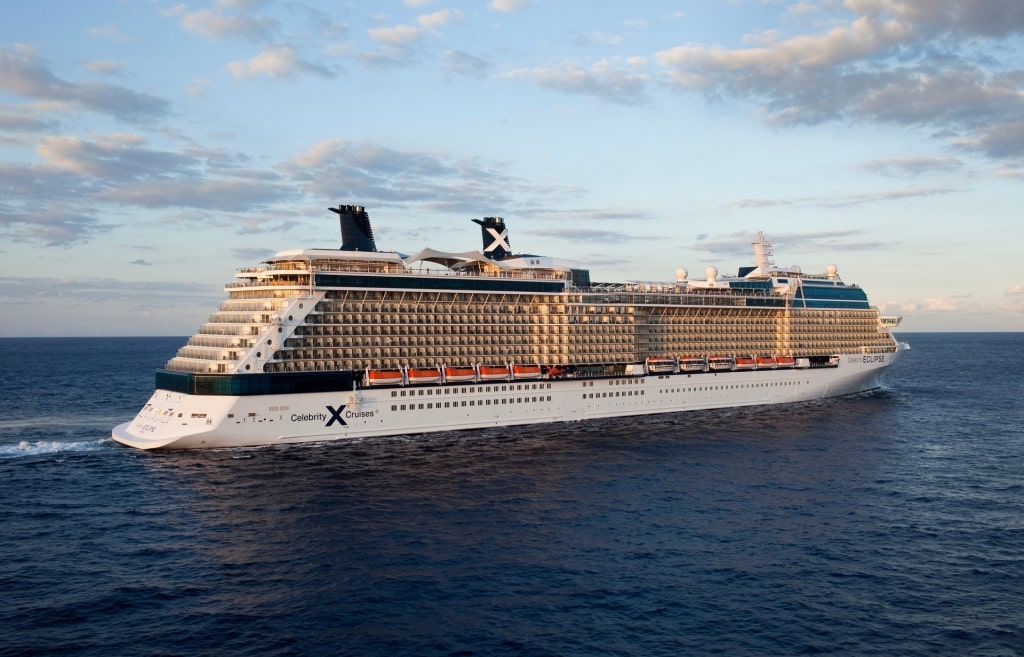
Celebrity Eclipse
Embark on your own wine tasting odyssey on a cruise to California with Celebrity Cruises, winner of the Award of Excellence at the Wine Spectator Restaurant Wine List Awards.
Visit vineyards on guided tours across the state while sampling our exclusive wine selection on board. Browse our cruise itineraries online and start planning your next unforgettable vacation.
